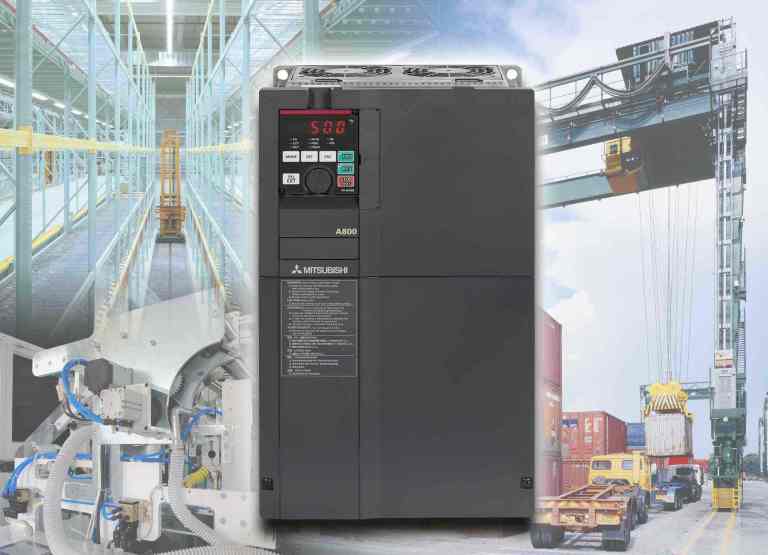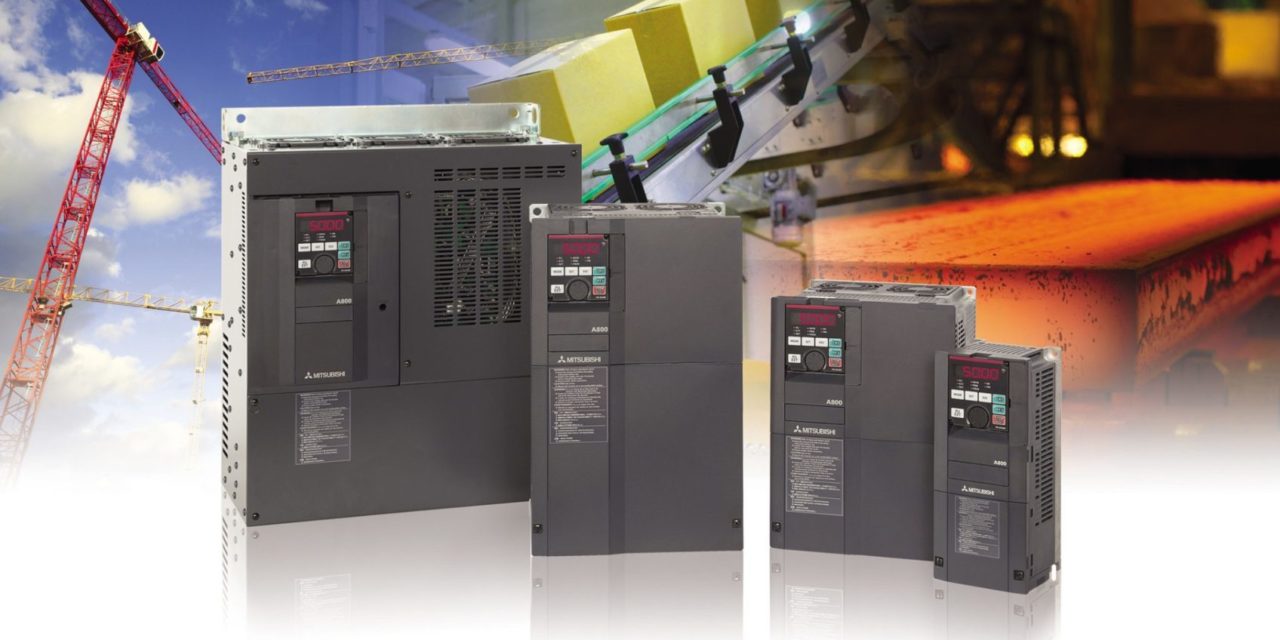For decades, machine builders and factories have relied on induction motors and variable frequency drives (VFDs) to provide an efficient means of motion control to their processes. The rationale behind the technology is relatively widespread: The Mitsubishi Electric A800 all-in-one variable frequency inverter is designed to control IPM motors. The A800 inverter features an IPM auto-tuning function, real sensorless vector control as well as volts / hertz control, allowing one unit to control.A built-in PLC function eliminates the need for additional cabinet hardware and communicates to the most popular network protocols including CC-Link, DeviceNet, Profibus-DP and Ethernet networks are also supported. Built with a 10-year design life, the Mitsubishi A800 inverter reduces total cost of ownership of a typical VFD by delivering superior performance in both induction and next-gen interior permanent magnet motors.For more information, contact The Proud Company today. 412.838.0230
The Mitsubishi Electric A800 all-in-one variable frequency inverter is designed to control IPM motors. The A800 inverter features an IPM auto-tuning function, real sensorless vector control as well as volts / hertz control, allowing one unit to control.A built-in PLC function eliminates the need for additional cabinet hardware and communicates to the most popular network protocols including CC-Link, DeviceNet, Profibus-DP and Ethernet networks are also supported. Built with a 10-year design life, the Mitsubishi A800 inverter reduces total cost of ownership of a typical VFD by delivering superior performance in both induction and next-gen interior permanent magnet motors.For more information, contact The Proud Company today. 412.838.0230
- Efficient speed control throughout the full range of the motor
- Precise torque control
- Dynamic load adjustment
WHAT’S AN IPM MOTOR?
As these drives increase in popularity, interior permanent magnet (IPM) motors are gaining more recognition for high efficiency performance. A relatively new design, IPM motor magnets are mounted within the rotor structure, unlike conventional permanent magnet motors where magnets are mounted on the rotor surface. Because of their unique construction, IPM motors offer many benefits over induction motors including:- Improved operating efficiency: IPM motors are more 30% more energy efficient when compared to traditional induction motors
- Decreased motor size: The power density of an IPM motor is greater than an induction motor, so it produces more power within a smaller size
- Reduction of mechanical components: Because of their high power density and their ability to deliver high continuous torque over their entire speed range, the need for gearing or other mechanical transmission devices in some applications is reduced
THE TECHNOLOGY BEHIND THE MOTOR
Combining VFD technology with IPM motors has created the need for even greater advances in variable frequency technology. Traditionally, VFDs use pulse-width-modulation (PWM) to control induction motors. In contrast, IPM motors require vector control, whether open loop or closed. While PWM control has the current impressed in the motor as a square wave, vector control impresses voltage which turns into a sine wave towards the rotor’s position (angle of the magnet), so it becomes possible to control the motor current.Vector control provides:- Smooth acceleration and accurate stopping capability
- Instant response to speed changes due to varying load
- High starting torque – up to 200% of rated torque at 0 speed
THE PATH FORWARD
Most VFDs can provide improved process control, energy savings, and lower maintenance costs. Market pressures also demand these devices provide high performance, exceptional reliability, a variety of networking protocols, and an overall lower total cost of ownership.Engineers specifying VFDs also have to consider application specific information, such as load type, speed range, control method and enclosure ratings along with horsepower, voltage, amperage and RPM, among others. Mitsubishi Electric is making this job easier with one drive to support applications from the simplest to the most complex, enabling engineers to specify one drive for across-the-board applications. The Mitsubishi Electric A800 all-in-one variable frequency inverter is designed to control IPM motors. The A800 inverter features an IPM auto-tuning function, real sensorless vector control as well as volts / hertz control, allowing one unit to control.A built-in PLC function eliminates the need for additional cabinet hardware and communicates to the most popular network protocols including CC-Link, DeviceNet, Profibus-DP and Ethernet networks are also supported. Built with a 10-year design life, the Mitsubishi A800 inverter reduces total cost of ownership of a typical VFD by delivering superior performance in both induction and next-gen interior permanent magnet motors.For more information, contact The Proud Company today. 412.838.0230
The Mitsubishi Electric A800 all-in-one variable frequency inverter is designed to control IPM motors. The A800 inverter features an IPM auto-tuning function, real sensorless vector control as well as volts / hertz control, allowing one unit to control.A built-in PLC function eliminates the need for additional cabinet hardware and communicates to the most popular network protocols including CC-Link, DeviceNet, Profibus-DP and Ethernet networks are also supported. Built with a 10-year design life, the Mitsubishi A800 inverter reduces total cost of ownership of a typical VFD by delivering superior performance in both induction and next-gen interior permanent magnet motors.For more information, contact The Proud Company today. 412.838.0230
Recent Comments